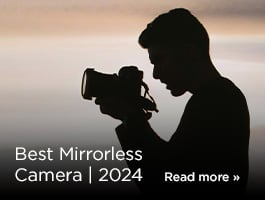Long exposures can be used to create striking images and they’re possible with even basic equipment. David Cleland explains how to get started.

One of the best things about the art of photography is the diverse range of techniques and processes that can be enjoyed by a photographer with a single camera and lens. For me, one of the most relaxing photography techniques has to be long-exposure photography in the great outdoors.
Long-exposure photography is about slowing down time; instead of ‘capturing a moment’, the process captures a longer duration of time, from a few seconds through to minutes and even hours.
In this post I’m going to offer an introduction to the process of long-exposure photography. I’ll be looking at the necessary equipment, process and theory, as well as how to put it all into practice.
Equipment
If you own a DSLR or mirrorless camera then you really shouldn’t need too much additional equipment to get started on your long-exposure journey. There are four main components required to get the most out of the process: camera, filter, tripod and a shutter release.
Camera
An obvious piece of equipment, I use the Fujifilm X-series cameras for my long exposure photography (X-Pro1, X-T1, X-T2, X-T3 and X100T) but any camera with a lens that offers the ability to attach filters will work very well. Don’t fall into the trap of thinking you need an ultra-wide lens for landscape work; the 18-55mm kit lens that comes with many of the main camera systems is more than adequate for this sort of photography.

Tripod
A tripod is the second most important piece of equipment you will need. During the process of capturing a long exposure, the camera’s shutter will be open for long periods of time. For this reason, the camera needs to be held as steady as physically possible as the slightest movement will ruin the capture.
A good tripod should definitely be seen as an investment item, as a cheap and flimsy tripod can create many more headaches than benefits. I use the 3 Legged Thing Brian, a carbon fibre tripod that is exceptionally light but is rock solid even on a windy day. Trust me, a good tripod should be high up your ‘essential kit’ list.

Filter
It is possible to capture long-exposure photography without filters, but the use of an ND10 filter means you can capture images regardless of the level of light. There are a number of different types of filter on the market, from screw-on models through to my personal filter of choice, the Lee Seven5 system. Although on initial inspection the Lee system may appear expensive, the cost of ownership is actually quite low. The Lee Filter Seven5 kit comes with the filter, the holder and a screw-on adaptor (for the size of your lens). This means that when you invest in a new or additional lens, all you need to purchase is another Lee adaptor ring that costs around £25 (much less than a new, dedicated screw-on filter for that particular lens). I also personally prefer the Lee system during winter as screw-on filters can be a challenge to attach with frozen fingers.

Shutter Release
A shutter-release allows a photographer to capture images without actually touching the camera. One key benefit of this is that you can use the shutter-release device to lock the shutter open for as long as you require using the Bulb mode option on your camera (I will explain this option later). Shutter-releases come in a number of forms, from low-cost cable releases to electronic controllers, right through to remote control. I tend to keep things simple and use a low-cost cable release with my X-range cameras. Just make sure you purchase a release that is suitable for your camera.

The Theory: Exposure Triangle
I am not going to get too bogged down in the theory but there are a few things you need to consider when taking a long-exposure image. If you have heard of the exposure triangle you will know the variables for a correct exposure are aperture, shutter speed and sensitivity (ISO).
Aperture
The aperture is the size of the opening of the blades inside the lens and thus it controls the amount of light that passes through the lens to reach the camera’s sensor. Aperture is measured in ratios known as f-stops. To put it simply and somewhat crudely, f/2.8 is a large aperture, meaning that lots of light reaches the sensor, while f/16 is a small aperture which allows much less light to get through. Don’t let the mathematics put you off; if you are new to photography, set the aperture of your camera to f/8 as this offers a nice medium depth of field.
Shutter speed
Most modern cameras come with two modes that are ideal for capturing long exposure images. On Fujifilm models, the Timer (T) mode offers an exposure of a set duration of time from 1-30 seconds. On other cameras you will be able to adjust this in the Shutter-Priority mode, usually marked Tv or S on the mode dial. The second mode is Bulb (B); this basically means you can open the shutter for as long as you require, from seconds to hours. This is where the cable release offers a big advantage as it avoids having to hold the shutter button down on the camera for long periods of time, risking both camera shake and cramp as you lock your finger in position for the duration of the exposure.

To get started with long-exposure photography I recommend sticking with the Timer/Shutter Release mode and selecting shutter speeds of up to 30 seconds. As your confidence grows, you can begin to explore exposures greater than 30 seconds using the Bulb (B) mode. Furthermore, I recommend capturing long exposure images in Raw rather than the JPEG format as this offers additional processing opportunities in post-production.
ISO
ISO goes back to film photography days and is a measure of how sensitive a type of film is to light. In the digital photography world, ISO controls how sensitive the camera sensor is to the light passing through the lens. A low ISO (eg ISO 200) means low sensitivity to light, so lots of light is needed to create the image. A high ISO (eg ISO 3200) means the camera is very sensitive to incoming light. A high ISO would be employed in low-light conditions – especially if you’re shooting handheld – while a low ISO is typically used in bright outdoor conditions. As with aperture, you don’t need to understand the science to be able to capture long exposures – just set the ISO as low as possible (ISO 100 or 200). It is essential you avoid the Auto ISO setting, even if your camera meters a scene at ISO 100 on a test shot, as once you attach the ND10 filter, the camera will try and compensate for the darker view by increasing the ISO.
Technique
Now we have the equipment and theory sorted, it’s time to look at the process of actually capturing a long exposure. Long-exposure photography is traditionally linked to rivers, seas and waterfalls, but it can also be used to capture the night sky. I always look for a good balance of static and moving content, so waterfalls are a great place to start.

Place your camera on the tripod and attach the shutter release (assuming you are using a cabled device). Regardless of your subject, composition is key; even if an image is perfectly exposed, it will never look good if the composition isn’t right. Spend some time studying the landscape through the viewfinder before rushing to capture the shot.
Making sure your camera is set to ISO 100 or 200, an aperture of f/8 and is set to the Timer/Shutter Priority setting, we can start the process of capturing the image. It is possible to mathematically calculate the best exposure for your conditions when using an ND10 filter, but I think one of the best ways to learn the technique of long-exposure photography is by seeing it in action.

It can difficult for some cameras to focus correctly with the ND10 filter attached so focus your camera at a point in the scene, and then switch your camera from autofocus to manual (this can be a switch on either the camera or lens body). By doing this we make sure our image is correctly in focus when captured through the filter.
Now attach the ND10 filter to the front of the lens and capture an image at 5 seconds. After the first exposure you might see a ‘processing’ message on your camera – don’t panic, some cameras offer long-exposure noise reduction that removes digital noise from an image. Repeat the process at 5-second intervals (ie the next image would be a 10-second exposure and so on up to 30 seconds). By doing this you will see the impact of time on the image on the camera’s rear display. If the image is still dark (underexposed) at 30 seconds then it is time to move to the Bulb (B) mode and try 40 seconds or longer.

If this is your first time approaching long-exposure photography, try to consider it in three simple stages:
- Find a location and compose the image
- Set up the camera (ISO, aperture and exposure mode)
- Take the shot
There are two stages of the day perfectly suited for long exposure photography that are known as the golden hours: the hour as the sun comes up over the horizon and the hour it goes down. I normally don’t use a filter during these periods of the day but they don’t last long.

This tutorial is your first step into the world of long-exposure photography, but the best advice I can give you is to get out and experiment. As your confidence grows you can begin to explore the mathematics behind exposure times. I personally believe you should follow your enjoyment of the art and let the science come naturally. One thing is sure: as the process of capturing long exposures slows you down, it has to be the most relaxing photoshoot you can experience. It gets you out there exploring and it allows you to behold the natural landscape while the camera captures the scene.
About the Author
David is a documentary and landscape photographer covering everything from dramatic long-exposure landscape photography through to live music. David is also an official Fujifilm X Photographer. You can see more of his work on his website or follow him on X or Facebook.
Sign up for our newsletter today!
- Subscribe for exclusive discounts and special offers
- Receive our monthly content roundups
- Get the latest news and know-how from our experts







